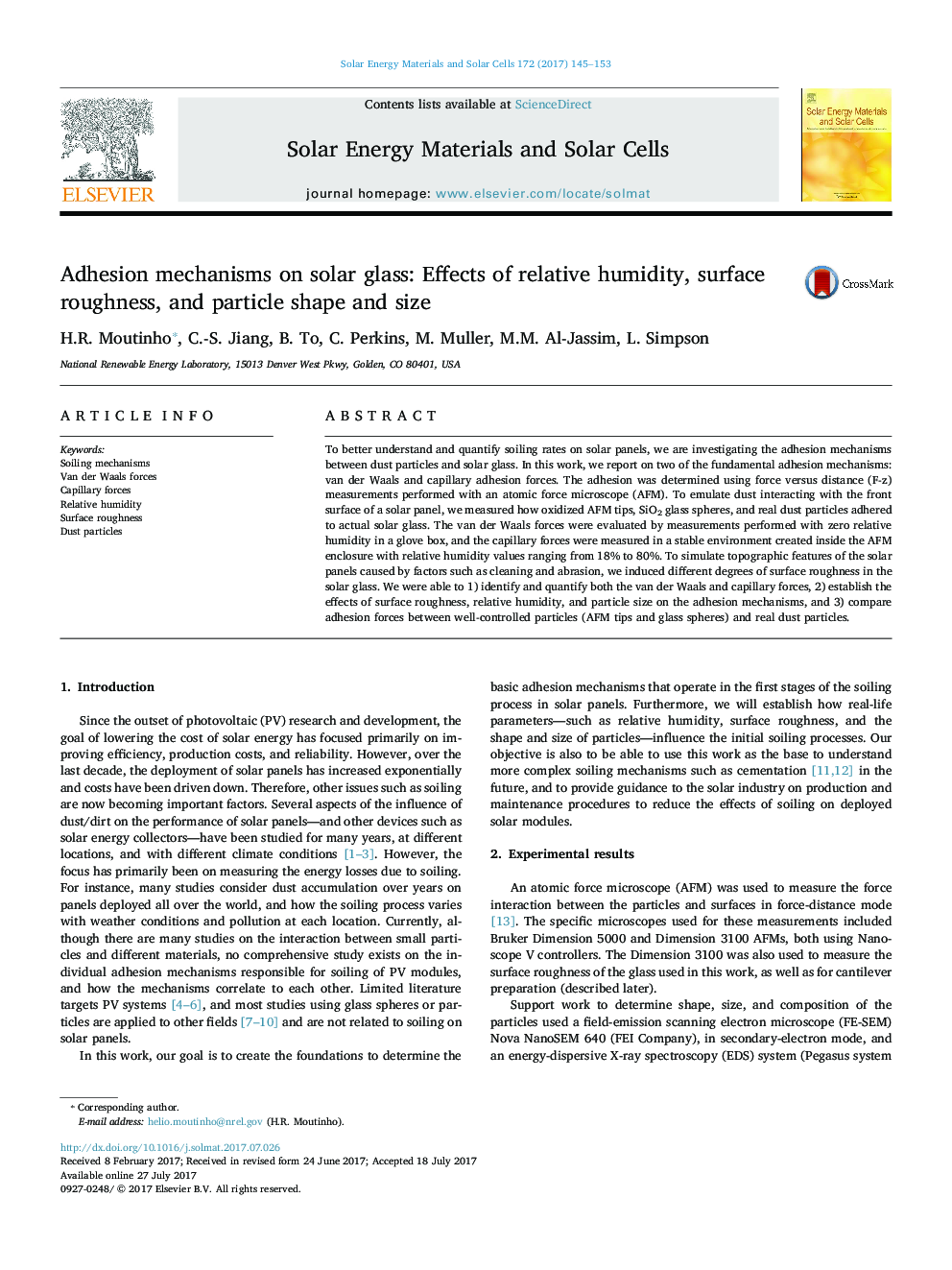| Article ID | Journal | Published Year | Pages | File Type |
|---|---|---|---|---|
| 6456901 | Solar Energy Materials and Solar Cells | 2017 | 9 Pages |
â¢Determination of the initial soiling mechanisms on solar glass: van der Waals, capillary forces.â¢Measurements using simulated dust particles, AFM tips and glass spheres, and real dust particles.â¢Study of the influence of surface roughness, humidity, particle size on the soiling mechanisms.â¢Results explain report that hurricane-speed wind is not able to remove small particles from glass.â¢Theoretical model provides good agreement with the van der Waals interaction.
To better understand and quantify soiling rates on solar panels, we are investigating the adhesion mechanisms between dust particles and solar glass. In this work, we report on two of the fundamental adhesion mechanisms: van der Waals and capillary adhesion forces. The adhesion was determined using force versus distance (F-z) measurements performed with an atomic force microscope (AFM). To emulate dust interacting with the front surface of a solar panel, we measured how oxidized AFM tips, SiO2 glass spheres, and real dust particles adhered to actual solar glass. The van der Waals forces were evaluated by measurements performed with zero relative humidity in a glove box, and the capillary forces were measured in a stable environment created inside the AFM enclosure with relative humidity values ranging from 18% to 80%. To simulate topographic features of the solar panels caused by factors such as cleaning and abrasion, we induced different degrees of surface roughness in the solar glass. We were able to 1) identify and quantify both the van der Waals and capillary forces, 2) establish the effects of surface roughness, relative humidity, and particle size on the adhesion mechanisms, and 3) compare adhesion forces between well-controlled particles (AFM tips and glass spheres) and real dust particles.
